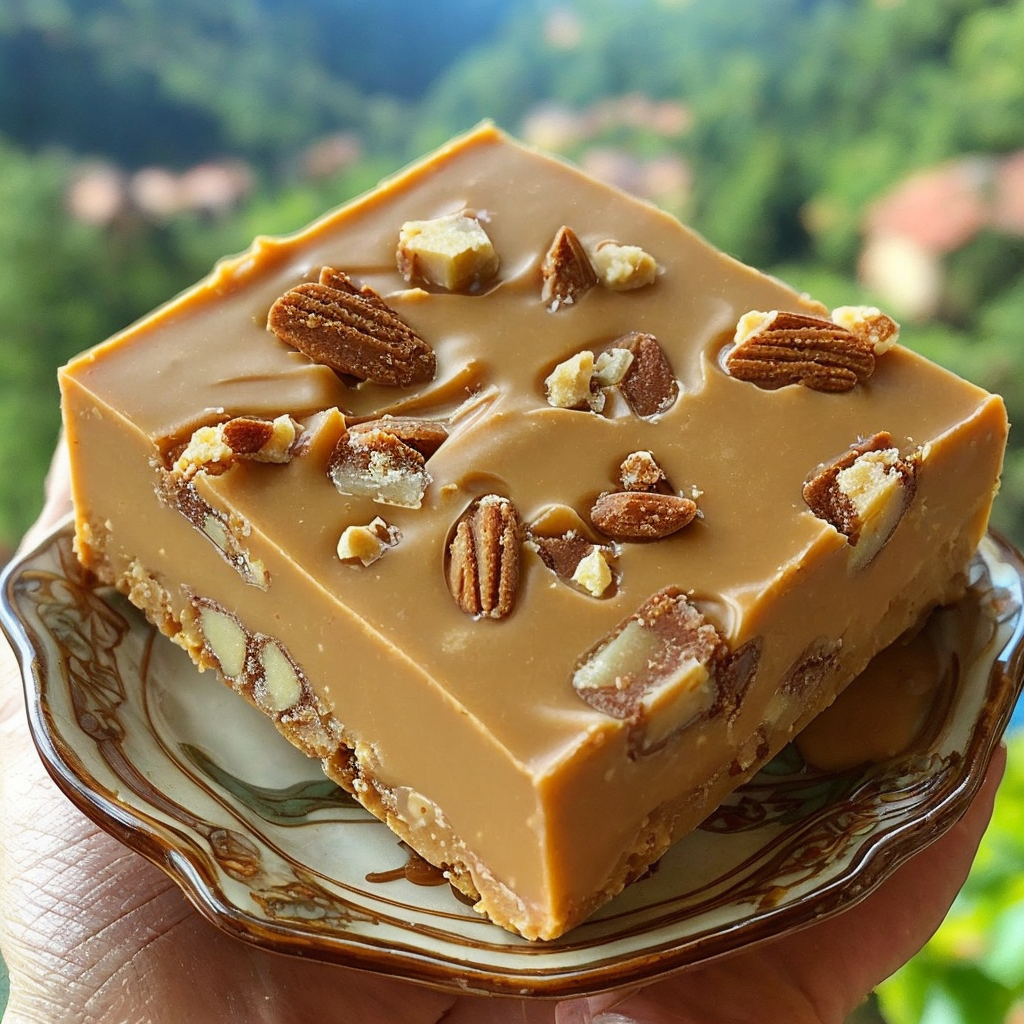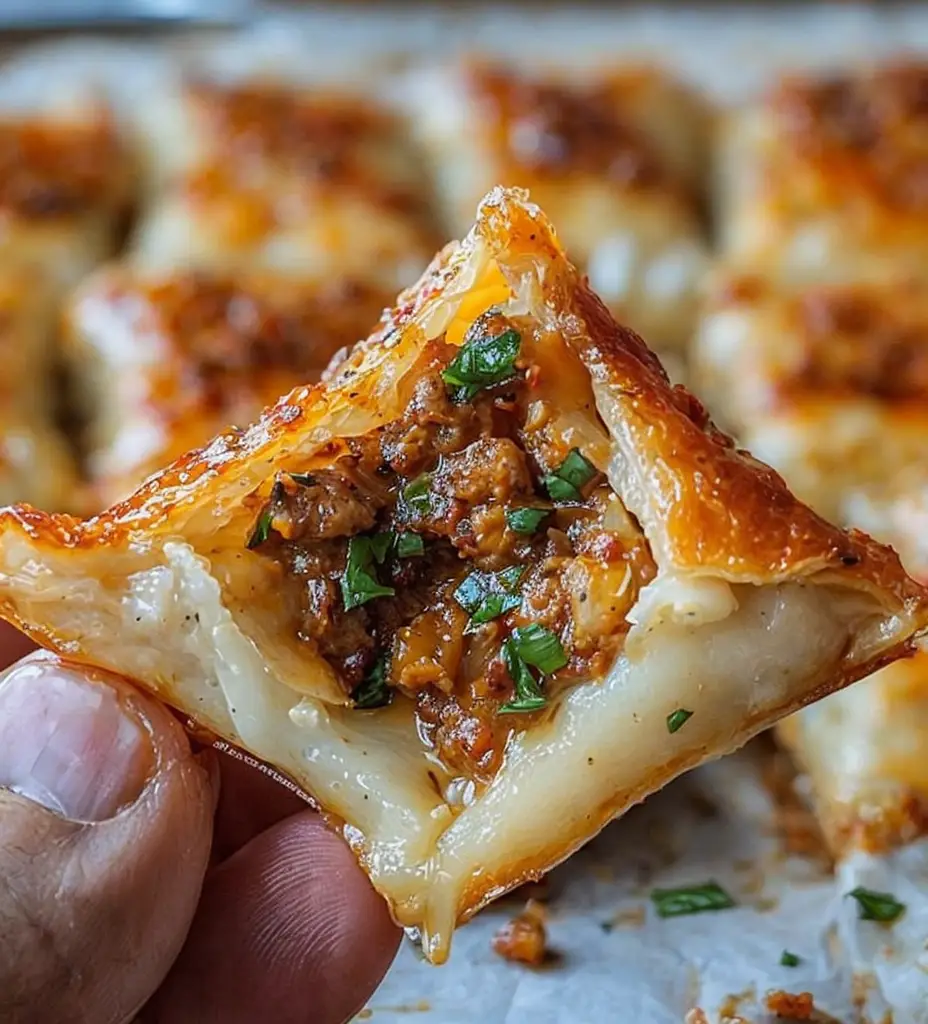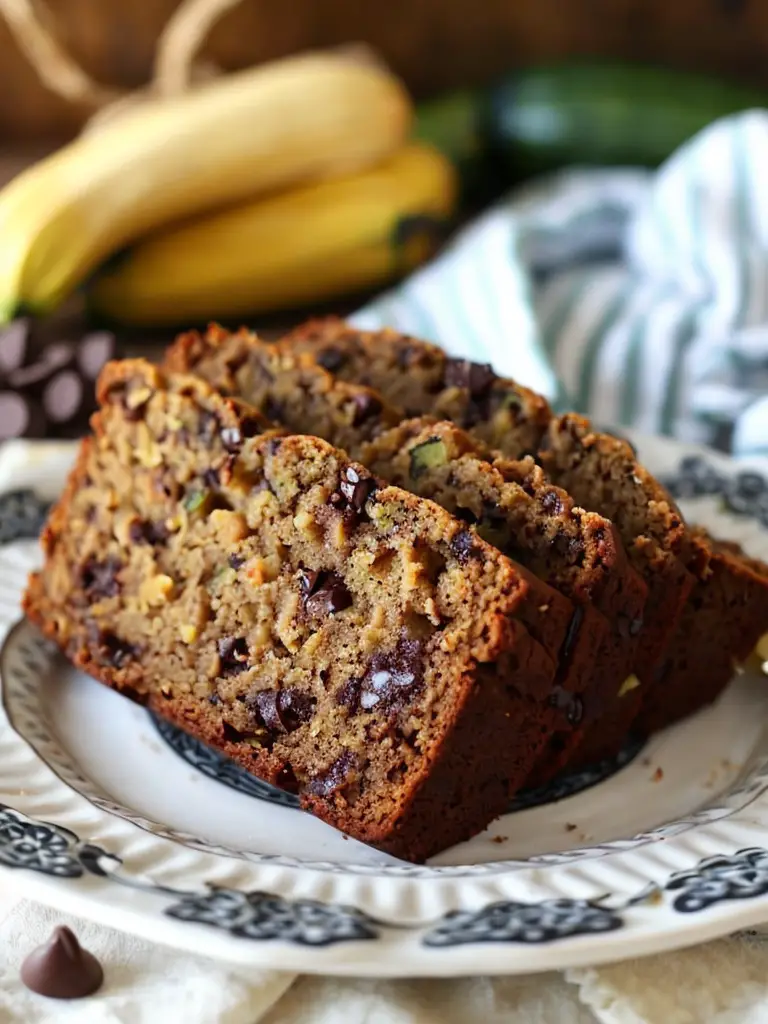Old-Fashioned Penuche Fudge: A Sweet Delight
Penuche fudge is a delightful treat that brings back memories of simpler times and family gatherings. This old-fashioned candy resonates with nostalgia, tantalizing your taste buds with its rich, caramel-like flavor and creamy texture. Made with brown sugar, butter, and whole milk, this fudge melts in your mouth, transporting you to grandma’s kitchen with every heavenly bite.
The allure of this old-fashioned penuche fudge lies not only in its taste but in its charming simplicity. This recipe is straightforward, making it accessible even to novice cooks. The process yields an irresistible fudge that can turn any occasion into a celebration, whether it’s a holiday gathering or a quiet evening at home. There is something magical about enjoying homemade fudge that enhances the flavors of life, inviting you to savor the sweet moments.
Quick Recipe Highlights
- Flavor Profile: The heavenly blend of caramel and vanilla in penuche fudge offers an exquisite taste that is both rich and creamy.
- Texture: This fudge boasts a smooth, melt-in-your-mouth consistency that is perfectly satisfying.
- Aroma: As it cooks, the warm scent of brown sugar and buttery goodness fills your kitchen, drawing everyone in.
- Visual Appeal: Penuche fudge is typically light tan, invitingly contrasted with darker, rich toppings for a delightful presentation.
- Skill Level Needed: While this recipe requires some basic cooking techniques, it remains beginner-friendly with clear instructions.
- Special Equipment: A candy thermometer and a sturdy saucepan are essential for crafting the perfect fudge.
Recipe Overview
- Difficulty Level: Creating old-fashioned penuche fudge requires a balance of patience and attention. While it’s moderately challenging, with practice, anyone can master it.
- Category: This recipe falls under desserts, specifically candy-making, making it a perfect ending to any meal.
- Cuisine: Penuche fudge is rooted in traditional American baking, reflecting the culinary influences of the Northeastern United States.
- Cost: This recipe is economical, utilizing common pantry staples such as sugar, butter, and milk, which are budget-friendly ingredients.
- Season: Penuche fudge shines particularly during the fall and winter seasons, complementing holiday celebrations wonderfully.
- Occasion: It’s a classic treat perfect for gifting during holidays or serving at family gatherings.
Why You’ll Love This Recipe
The taste and texture of old-fashioned penuche fudge make it truly irresistible. Rich and buttery flavors meld seamlessly with the sweetness of brown sugar, providing a comforting dessert experience. The creamy, melt-in-your-mouth consistency adds to its appeal, making each bite a delightful indulgence. It’s a treat that transcends generations, reminding us of lazy afternoons spent enjoying simple pleasures.
In terms of convenience, this recipe is as straightforward as they come. With just a few ingredients, you can whip up a rich and indulgent fudge that is ready to share with friends and family. The preparation time is quick, allowing you to produce a batch in under an hour. This makes it an excellent option for those last-minute dessert needs or festive celebrations.
Nutritionally, while fudge is a treat meant to be enjoyed in moderation, it offers some benefits due to the inclusion of real butter and whole milk, which provide fat-soluble vitamins. When made at home, you have control over the ingredients and can avoid any preservatives found in store-bought varieties, making it a healthier choice.
Socially, penuche fudge plays a significant role in gatherings, serving as a delicious conversation starter and an inviting gift during holidays. The act of sharing homemade treats strengthens bonds and creates lasting memories, making this fudge a perfect addition to any occasion.
From a cost-effectiveness standpoint, old-fashioned penuche fudge is a great value. It allows you to create a gourmet experience at home without breaking the bank. The simple ingredients are readily available year-round, making this recipe both accessible and economical.
Historical Background and Cultural Significance
The origin of penuche fudge can be traced back to New England, where the rich tradition of candy-making flourished in the 19th century. Penuche, derived from the Spanish word for “brown sugar,” symbolizes the utilization of locally sourced ingredients during early American settlements. Its simple preparation reflects the resourcefulness of home cooks who sought to create delicious treats with available pantry items.
Culturally, penuche fudge holds a special place in American culinary heritage. It is often associated with family gatherings, particularly during the holidays, where it serves as a sweet reminder of cherished traditions. Many families pass down their unique recipes through generations, making this fudge a symbol of both culinary creativity and familial love.
Over the years, the recipe has evolved, with various adaptations emerging that incorporate different flavors such as chocolate, nuts, and spices. These regional variations demonstrate the versatility of penuche fudge while maintaining its classic foundation. As home bakers experiment, the essence of this sweet treat continues to resonate, appealing to both old and new generations.
In contemporary culture, penuche has retained its status as a beloved confection. Its allure is found in its nostalgic flavors and homemade touch, making it a staple at potlucks and gatherings. Whether enjoyed plain or dressed up with toppings, old-fashioned penuche fudge remains a celebrated dessert that resonates with sweet memories.
Ingredient Deep Dive
Brown Sugar: Brown sugar is the quintessential element that defines penuche’s flavor. It contains molasses, which contributes to the fudge’s characteristic caramel tones. Nutritionally, it retains some minerals and has a lower glycemic index compared to white sugar. Look for a soft, moist variety, and store it in an airtight container to prevent hardening. For substitutes, you can use white sugar with a splash of molasses.
Butter: In this fudge recipe, real butter provides richness and flavor, serving as the base for the creamy texture. It also enhances the mouthfeel and plays a critical role in achieving the correct consistency. Consider using unsalted butter for better control over flavor, and store it in a cool, dry place. Should you need a dairy-free alternative, coconut oil or vegan butter can be used instead.
Whole Milk: Whole milk adds moisture and a creamy texture to the fudge, creating a rich base that binds the ingredients together. It’s a good source of calcium and vitamin D, contributing to overall dietary health. When selecting milk, opt for fresh, high-quality products, and keep it refrigerated. As a substitute, you can use heavy cream for a richer taste or a plant-based milk for dairy-free options.
Common Mistakes to Avoid
- Not Using a Candy Thermometer: Without a thermometer, it’s challenging to reach the correct temperature, leading to inconsistent results.
- Overcooking the Fudge: Cooking the fudge too long can result in a grainy texture, so watch the temperature carefully.
- Under-Whipping: Insufficient whipping can cause the fudge to lose its creamy texture, so be sure to incorporate air during cooling.
- Inadequate Cooling Time: Cutting into warm fudge can lead to a crumbly mess, so allow it to set properly before slicing.
- Not Greasing the Pan: Fudge can stick to pans, so be sure to lightly grease your dish or line it with parchment paper.
- Using Cold Ingredients: Cold ingredients can impact the melting process, resulting in a lumpy texture, so ensure all items are at room temperature.
- Poor Storage: Improper storage can lead to fudge drying out or absorbing odors, so wrap it tightly in plastic wrap.
- Ignoring Ingredients: Always follow the measurements precisely; small variances can seriously affect the outcome of your fudge.
Essential Techniques
Temperature Control: Mastering temperature control is crucial when making penuche fudge. Proper temperature ensures that the sugar dissolves fully, creating a smooth texture. To master this, always use a reliable candy thermometer and regularly check on the cooking process. Look for signs that indicate readiness, such as a grainy texture dissolving into a shiny surface.
Whipping the Fudge: Once removed from the heat, whipping the fudge allows it to aerate and obtain its creamy consistency. Aim for a vigorous stirring motion; this introduces air that helps the fudge maintain its structure as it cools. Beware of common pitfalls like over-whipping, which can lead to a too-stiff consistency; aim for a spreadable texture with a slight sheen.
Pro Tips for Perfect Old-Fashioned Penuche Fudge
1. Use fresh ingredients for the best flavor; stale sugar or butter can negatively impact the taste.
2. Opt for a heavy-bottomed saucepan to distribute heat evenly and prevent burning.
3. Allow the fudge to cool slightly before pouring to prevent it from sticking to the sides of the pan.
4. Experiment with flavor variations by adding vanilla extract or chopped nuts for a unique twist.
5. Taste your fudge mixture before allowing it to set; tweak sweetness if necessary.
6. For a more indulgent treat, top with chocolate ganache or sprinkle sea salt on top.
7. Keep it cool and stored properly to maintain its creamy texture.
8. Remember that practice makes perfect; don’t be discouraged by the first attempt, as techniques improve over time.
Variations and Adaptations
Penuche fudge can be tailored to suit various tastes and preferences. Consider adding regional flavors, such as maple syrup or whiskey for a unique twist on the traditional taste. Seasonal adaptations can include spices like cinnamon or nutmeg during the cold months for a warm, cozy flavor profile.
Dietary modifications are also possible; for a gluten-free version, simply ensure no additives are included in your sugar and other ingredients. For a more health-conscious approach, try using alternatives like coconut oil instead of butter or agave syrup in place of traditional sugar.
Flavor variations can expand beyond the classic caramel-like taste by incorporating ingredients like espresso or citrus zest. For those who enjoy added texture, consider mixing in mini marshmallows or dried fruits for delightful surprises in each bite.
Finally, presentation alternatives can elevate your old-fashioned fudge into a gourmet treat. Slice the fudge into different shapes or layer it within a gift box arranged with toppings, making it visually appealing for any occasion.
Serving and Presentation Guide
When serving old-fashioned penuche fudge, presentation matters. Cut the fudge into neat squares or rectangles for a polished appearance. Consider stacking the pieces or arranging them on a decorative platter surrounded by nuts or fruit for a stylish touch.
Garnish the fudge with a light dusting of powdered sugar or drizzle with melted chocolate for an enhanced visual allure. Temperature-wise, serve fudge at room temperature to maintain its creamy texture, allowing guests to savor each bite fully.
Pair your fudge serving with coffee or tea, offer it as part of a dessert platter at gatherings, or include it in a homemade gift basket. Portion control is also essential; aim for bite-sized pieces that satisfy without overwhelming your guests’ palates.
Wine and Beverage Pairing
Pairing wines with old-fashioned penuche fudge can elevate your dessert experience. A sweet dessert wine like Sauternes or Port harmonizes beautifully with the fudge’s buttery notes. For a more adventurous option, consider a spiced mead that complements the caramel flavors.
For non-alcoholic alternatives, rich hot chocolate or spiced chai lattes provide a comforting backdrop to the fudge. If you desire a refreshing accompaniment, iced herbal teas can cleanse the palate between bites.
When serving these beverages, consider their temperatures; warm drinks should be paired with warm fudge for a cozy experience. Offering a variety of options ensures that all guests can find their perfect match for indulging in this classic treat.
Storage and Shelf Life
Storing old-fashioned penuche fudge properly can significantly extend its shelf life. Store it in an airtight container at room temperature to maintain its texture and flavor. If your home is particularly warm, refrigerating the fudge can help it stay fresh longer.
Each piece should be wrapped individually in plastic wrap or wax paper to prevent sticking and maintain freshness. Be sure to check for signs of spoilage, such as an off smell or dry texture, which can indicate it’s time to toss the fudge.
If you wish to freeze your fudge, cut it into pieces and store it in a freezer-friendly bag. Thaw pieces overnight in the refrigerator before serving for the best texture. Reheating isn’t necessary; simply allow it to return to room temperature for a delightful, soft bite.
Make Ahead Strategies
Preparing old-fashioned penuche fudge ahead of time not only saves time but also enhances the beauty of your gatherings. Aim to make the fudge at least a day in advance; this allows the flavors to deepen and the texture to set perfectly.
You can store the fudge in an airtight container while leaving it at room temperature between steps. The quality remains intact when stored properly, so you can focus on other preparations leading up to your event.
When you’re almost ready to serve, consider adding fresh elements like sprinkle toppings or a drizzle of chocolate for a last-minute, eye-catching enhancement. Reheating isn’t necessary but ensure you allow the fudge to reach room temperature before serving for optimal flavor and texture.
Scaling Instructions
If you want to enjoy more or less fudge than the original recipe offers, scaling is straightforward. For halving the recipe, reduce all ingredients accordingly, ensuring measurement precision is maintained for the best results.
When doubling or tripling the recipe, be mindful of your saucepan size; a larger pot may be necessary to accommodate increased volume without overflowing. Adjust cooking times slightly, as larger batches may require extra simmering.
Additionally, consider storage adjustments. More fudge translates to additional containers or bags to store your treats properly. Always monitor the texture and temperature to match the original recipe regardless of your final quantity.
Nutritional Deep Dive
Understanding the nutritional value of old-fashioned penuche fudge can inform your enjoyment of this decadent treat. Each serving primarily comprises sugars and fats, typical for desserts, making moderation key.
The macronutrient breakdown typically reveals a significant carbohydrate content, primarily from sugars, while the fats from butter play a crucial role in flavor and texture. Additionally, one can glean micronutrient insights, such as vitamins and minerals, derived from whole milk and brown sugar.
As with all treats, portion analysis is vital, especially if you’re managing calorie intake. Enjoying one or two pieces at a time can satisfy cravings without derailing dietary goals, allowing you to relish the rich flavors without guilt.
Dietary Adaptations
Old-fashioned penuche fudge can be modified to cater to various dietary needs. For a gluten-free version, simply ensure all your ingredients are free from gluten additives; this fudge naturally meets that criterion.
Dairy-free adaptations can be made by substituting cow’s milk with almond or coconut milk and using dairy-free butter alternatives in place of traditional butter. For a vegan twist, consider opting for a plant-based cream for the same creamy texture.
If you’re looking for low-carb or keto adaptations, consider using sugar substitutes like erythritol or monk fruit, creating a similarly rich flavor without the carbs. Each of these modifications allows penuche fudge to accommodate different dietary preferences while maintaining its delightful charm.
Troubleshooting Guide
If you encounter texture issues with your fudge, note that this often results from either overcooking or undercooking. If it’s too runny, a return to the heat for a brief period can help it set better. Conversely, boiling it for too long leads to a dry outcome; balancing temperature and timing is crucial.
Flavor balance is another common issue. If your fudge is too sweet, consider adjusting the recipe next time by reducing sugar slightly or adding a pinch of salt to enhance flavor depth. For too much butter flavor, cutting back on the butter can yield a more balanced taste.
Challenges with equipment may arise, particularly with candy thermometers. If you find readings inconsistent, ensure that your thermometer is calibrated properly. Invest in a quality tool to guarantee accurate temperature readings for fudge-making.
Timing concerns can affect how fudge sets. Make sure you allow adequate cooling time before cutting into pieces; patience is vital for achieving the best texture and presentation.
Recipe Success Stories
Our community is filled with success stories featuring old-fashioned penuche fudge. Family traditions often share the joy of creating and perfecting this recipe, with many posting adaptations and variations that highlight their creativity.
Some readers have embraced flavor ideas from local culinary customs, exploring new possibilities that blend heritage with innovation, resulting in unique twists on the classic fudge. These personalized tales add to the richness of the recipe and inspire others to experiment with their versions.
Photography and presentation tips from our community have showcased indulgent servings of penuche fudge, often paired with complementary items that enhance both appearance and taste. Sharing these moments fosters connection and encourages dialogue around beloved traditions.
Frequently Asked Questions
A: Graininess often occurs when sugar crystallizes, possibly due to undercooking or stirring too vigorously. Ensure to maintain proper cooking temperature and avoid excessive agitation after removing it from heat.
Q: Can I use light brown sugar instead of dark?
A: Yes, light brown sugar can be used, but it will result in a milder flavor. The darker sugar will impart more complexity, so choose according to your taste preference.
Q: How do I know when my fudge is ready?
A: When the fudge reaches the soft-ball stage at around 234°F (112°C) on a candy thermometer, it is ready. The mixture should hold its shape when dropped into cold water.
Q: Can I add nuts to my fudge?
A: Absolutely! Chopped nuts such as walnuts or pecans can be added just before pouring the mixture into a pan. This introduces a delightful crunch and adds flavor complexity.
Q: How long does penuche fudge last?
A: When stored properly in an airtight container, penuche fudge can last up to two weeks at room temperature and even longer if refrigerated or frozen.
Q: Can I freeze penuche fudge?
A: Yes, penuche fudge freezes well. Wrap it securely in plastic wrap or aluminum foil, place it in a freezer bag, and it can be kept for up to three months. Thaw in the fridge before serving.
Q: Is penuche fudge suitable for gifting?
A: Definitely! Penuche fudge makes a wonderful homemade gift. Package it neatly in a box or jar, and it’s perfect for sharing with family and friends during the holidays.
Q: How can I make my fudge softer?
A: If your fudge turns out too hard, try adding a little extra butter or cream when reheating it gently on the stove. This will help to soften the texture.
Q: Can I reduce the sugar in the recipe?
A: While you can reduce sugar, it may alter both flavor and texture. Consider using sugar substitutes if you aim for lower sweetness while retaining the fudge-like qualities.
Q: Do I need a special pan for making fudge?
A: A heavy-bottomed saucepan is recommended to avoid burning. Additionally, a square baking pan lined with parchment paper makes for easy cutting and cleanup.
Additional Resources
If you loved making old-fashioned penuche fudge, exploring related recipes can inspire new culinary adventures. Check out similar confections like chocolate fudge, peanut butter fudge, or caramel candies to broaden your dessert repertoire.
Deepen your knowledge with technique guides on candy-making, including tips on tempering chocolate or mastering various types of syrups. For ingredient information, understand the varieties of sugars and their impacts on flavor and texture.
Investing in quality kitchen equipment will enhance your cooking experience, and exploring seasonal variations can introduce fresh, delightful elements that spark creativity in the kitchen.
Join the Conversation
We invite you to join our vibrant community of dessert enthusiasts! Share your own experience with old-fashioned penuche fudge or post pictures of your beautifully crafted pieces on social media. Engage with other bakers to exchange tips and variations you’ve tried.
Your feedback on this recipe can help others as they embark on their own fudge-making adventures. We encourage you to leave a review or comment about how you personalized your fudge to inspire creativity in our kitchen community!
The Recipe
Old-Fashioned Penuche Fudge
Serves: 24 pieces
Prep Time: 15 mins
Cook Time: 20 mins
Total Time: 35 mins
Kitchen Equipment Needed
- Candy thermometer
- Heavy-bottomed saucepan
- Wooden spoon or spatula
- Square baking pan (8-inch)
- Parchment paper
Ingredients
- 2 cups brown sugar
- 1/2 cup whole milk
- 1/2 cup unsalted butter
- 2 teaspoons vanilla extract
- 1/4 teaspoon salt
Directions
- In a heavy-bottomed saucepan, combine the brown sugar, whole milk, and butter. Cook over medium heat, stirring frequently until the mixture comes to a boil.
- Attach a candy thermometer to the side of the pan and continue to cook the mixture, without stirring, until it reaches 234°F (soft ball stage).
- Remove the pan from heat and let it cool for a few minutes until it cools to about 200°F.
- Stir in the vanilla extract and salt until well combined, then beat the fudge mixture with a wooden spoon or spatula until it thickens and loses its gloss.
- Quickly pour the fudge into a greased or parchment-lined baking pan, spreading evenly.
- Let the fudge cool completely at room temperature before cutting into squares.
Recipe Notes
- For added flavor, you can mix in chopped nuts or top the cooled fudge with sea salt.
- Store fudge in an airtight container at room temperature or refrigerate for extended freshness.
- Fudge can be frozen for up to three months. Just make sure it’s well wrapped to prevent freezer burn.




